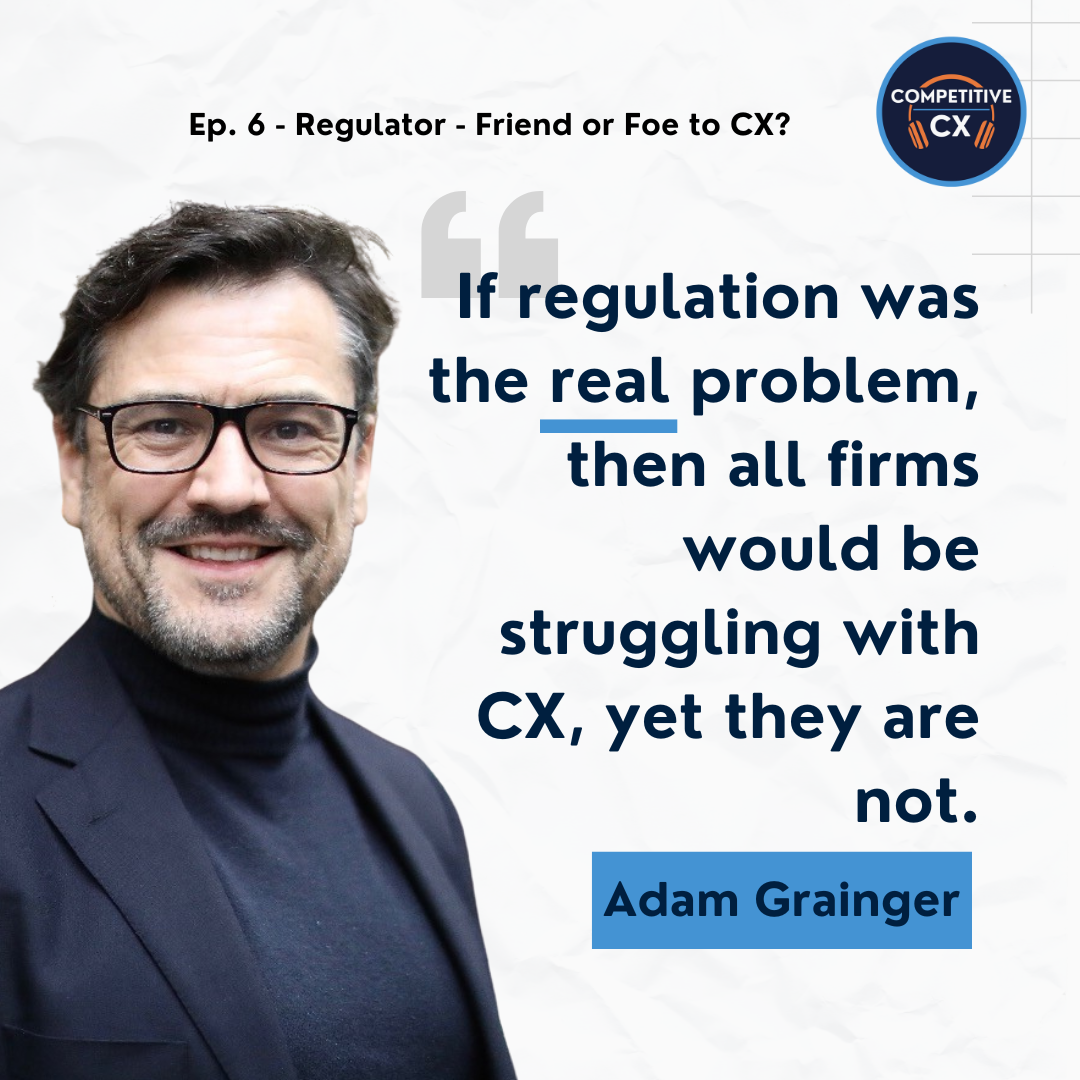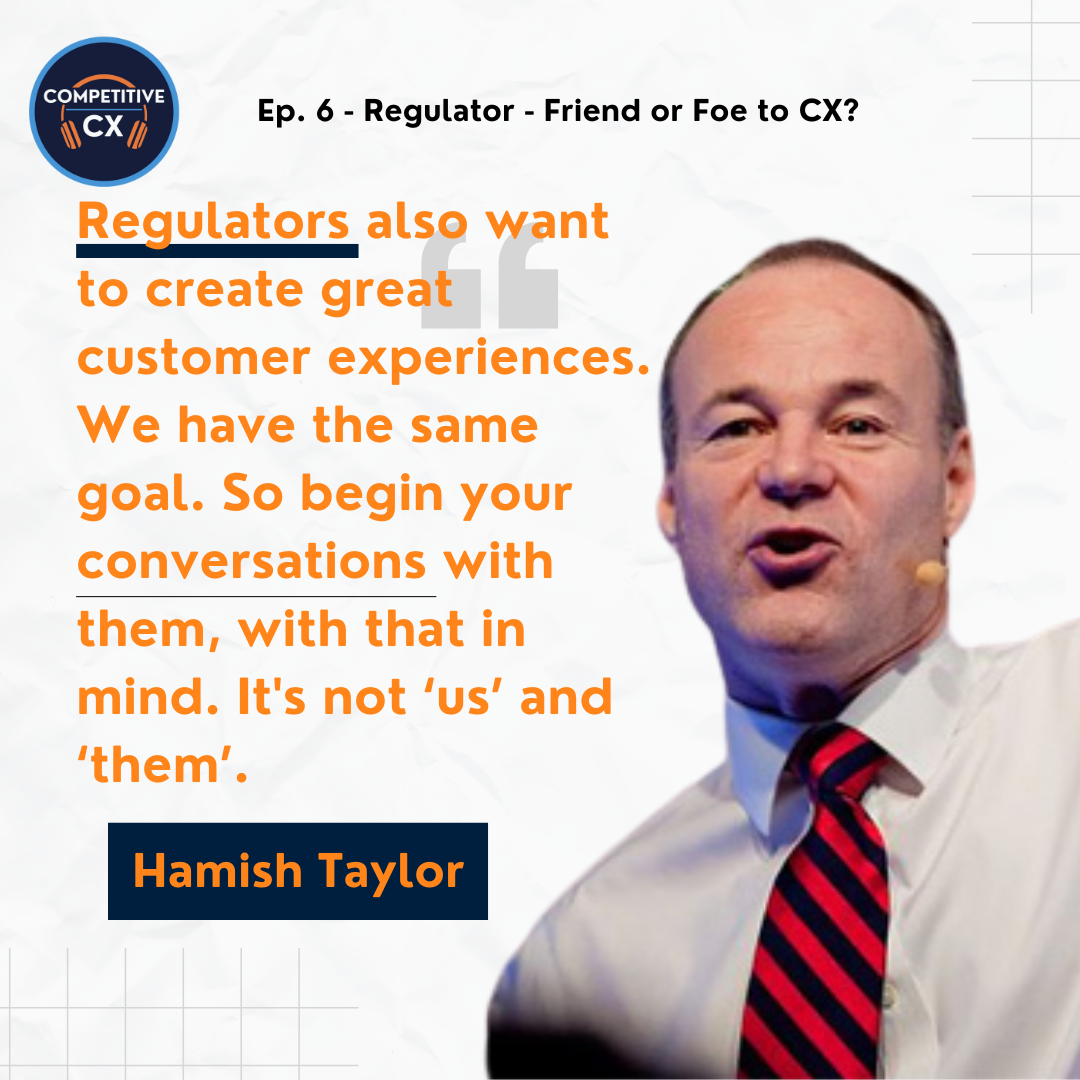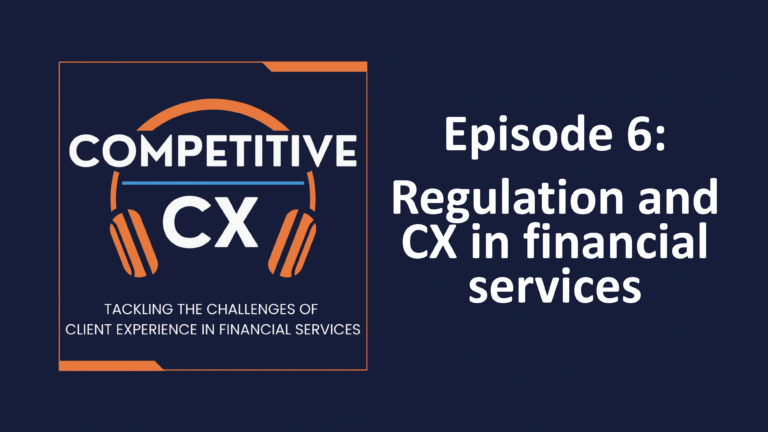In brief
Regulation and CX in financial services are often seen as opposing forces – but they don’t have to be. In this episode of Competitive CX, Aimer, Taylor, and Grainger explain how top-performing firms use regulation as a framework for trust-building, innovation, and better design. With punchy metaphors and practical examples, they show how to stop blaming the rules – and start building better journeys within them.
Regulator – friend or foe to CX?
In Episode 6 of Competitive CX, Melanie Aimer, Hamish Taylor, and Adam Grainger tackle some of the most persistent questions in financial services: how does regulation affect CX in financial services, can regulation improve client experience, and how to design compliant client journeys in finance.
Drawing on years of industry experience, the hosts argue that the issue isn’t regulation itself, but how firms choose to respond to it. They explore how forward-thinking leaders embed compliance into design, treat regulators as collaborators, rather than using “the rules” as an excuse for uninspiring client journeys.
With practical examples and punchy metaphors (including rugby referees and redesigning journey maps), this episode reframes the regulator from a constraint into a strategic ally.
Whether you’re building trust, boosting efficiency, or planning digital transformation, it’s time to stop kicking the can – and start partnering with the referee.
Regulation and CX in financial services
In this episode, the Competitive CX team explores the sometimes misunderstood relationship between regulation and CX in financial services.
Taylor compares regulators to rugby referees: their job isn’t to block play, but to keep the game fair and flowing – if firms engage early and collaborate.
Grainger stresses that regulation doesn’t dictate how to deliver CX; it defines the floor on which firms can build and the boundaries within which innovation can thrive. Blaming market-wide regulation for firm-specific service issues is a sign of poor design, not external constraint.
“To conclude, perfect or imperfect, regulation sets the floor. But whether you build from there – or hide behind the rules – is entirely on you.”
Aimer offers tactical advice: involve compliance teams early, map journeys with rules in mind, and turn necessary checks into client trust builders.
The team explains that standout CX isn’t about bending the rules – it’s about designing with them. The most client-centric firms treat regulation as an enabler, not a barrier.



Key Takeaways
- Regulation is not the enemy of CX – poor design is.
- All firms play by the same rules – but some still win on CX.
- Treat compliance as a design partner, not a tick-box barrier.
- Map the client journey first, then overlay regulatory requirements.
- Excusing bad service “because of regulation” erodes trust.
- Engaging regulators early helps shape practical, client-first outcomes.
- Regulation can be a catalyst for trust, innovation, and differentiation.
If you’re an asset manager, check out Accomplish’s client experience services here.
And if you just found this useful, check out our other podcast episodes designed for financial services professionals:
- Why care about CX?
- What is CX and who should own it?
- Cultures that kick CX down the road.
- Organisational structure gets in the way of CX.
- Incentives that inadvertently deprioritise CX.
- Regulator – friend or foe to CX?
- Technology – enabler or disabler for CX?
- Solving the most common CX complaints.
- Where to start with CX?
Listen to the full recordings on Podbean.
Connect with Hamish Taylor, Melanie Aimer and Adam Grainger on LinkedIn and follow Competitive CX for cutting-edge insights on client experience in finance.
Frequently asked questions
1. How does regulation affect CX in financial services?
Regulation sets boundaries for fair, safe service – but firms choose how to work within them. When used proactively, regulation can enhance trust, improve journeys, and create competitive advantage.
2. Can compliance and client experience work together?
Yes. Firms that treat compliance as a design partner – rather than a blocker – achieve smoother, more trustworthy client journeys without breaking the rules.
3. Why do some firms blame regulation for poor CX?
Blaming regulation often masks poor internal design. The most client-centric firms meet the same rules as everyone else – yet still deliver standout CX.
4. What’s the first step to aligning regulation and CX?
Key steps to managing regulation and CX in financial services are to involve compliance teams early, map journeys before applying rules, and design for both trust and usability. This reduces rework and improves both outcomes and oversight.








